Cyberfraud Costs 0.7% of GDP
For Prelims: Indian Cyber Crime Coordination Centre (I4C), Cyber Frauds, Money Laundering, Phishing, Malware, Cyberbullying, Cyber Spying, Pegasus, National Cyber Crime Reporting Portal, National Cyber Security Policy, Computer Emergency Response Team - India (CERT-In), Cyber Surakshit Bharat Initiative, Cyber Swachhta Kendra, National Critical Information Infrastructure Protection Centre (NCIIPC), Digital Personal Data Protection Act, 2023.
For Mains: Economic cost of cyber fraud, threats and way forward.
Why in News?
Recently, the Indian Cyber Crime Coordination Centre (I4C), which runs under the Union Ministry of Home Affairs (MHA) made important projections related to cyber frauds.
What is the Indian Cyber Crime Coordination Centre (I4C)?
- About:
- I4C was launched by the Ministry of Home Affairs in 2020 to deal with all types of cyber crimes including cyber fraud in a comprehensive and coordinated manner.
- Objectives of I4C:
- To act as a nodal point to curb Cybercrime in the country.
- To strengthen the fight against Cybercrime committed against women and children.
- Facilitate easy filing Cybercrime related complaints and identifying Cybercrime trends and patterns.
- To act as an early warning system for Law Enforcement Agencies for proactive Cybercrime prevention and detection.
- Awareness creation among public about preventing Cybercrime.
- Assist States/UTs in capacity building of Police Officers, Public Prosecutors and Judicial Officers in the area of cyber forensic, investigation, cyber hygiene, cyber-criminology, etc
- National Cyber Crime Reporting Portal:
- Under I4C, the National Cyber Crime Reporting Portal is a citizen-centric initiative which will enable citizens to report cyber fraud online and all the complaints will be accessed by the concerned law enforcement agencies for taking action as per law.
What are the Key Highlights of the I4C Projection?
- Financial Impact: Indians are expected to lose over Rs 1.2 lakh crore in 2025 to cyber fraud, siphoning off 0.7% of India’s GDP.
- From January to June, 2024 Rs 11,269 crore was lost to financial fraud.
- Contributors to Cyber Fraud: Approximately 4,000 mule bank accounts are identified daily by I4C.
- I4C has identified 18 ATM hotspots across the country from where money was fraudulently withdrawn.
- A mule account refers to a bank account that is used to facilitate illegal activities such as money laundering and fraudulent transactions.
- Origin of Scam: The government has identified “scam compounds” in South East Asian countries such as Cambodia, Myanmar and Laos from cyber fraudsters.
- Most scams have origins in China or Chinese-linked entities.
- Modus Operandi: International Scam Compounds resemble call centres and have emerged as a hub of investment scams.
- Fraudsters make calls to unsuspecting people from Indian mobile phone numbers and dupe people of their money through various methods like lottery and prize scams, etc.
- Illegal Activities: Cyber scams can be used for terror-financing and money laundering.
- For instance, during March to May 2024, crypto currency worth Rs 5.5 crore was purchased using Indian accounts and laundered outside India.
- Cash withdrawals using mule account debit cards have been reported at overseas ATMs in Dubai, Hong Kong, Bangkok, and Russia.
What is Cyberfraud?
- About: Cyber fraud is a kind of cyber crime that aims to steal money (or other valuable assets) from an entity.
- It involves using online solutions (internet based) to commit fraud.
- Types of Cyberfraud:
| Cyber Threat | Description |
| Phishing | Phishing involves emails that appear to be from trusted sources, tricking users into clicking links that lead to fake websites and attackers gain sensitive details e.g., credit card numbers. |
| Malware | Malware is used to steal personal information that allows cyber criminals to gain control of a victim's computer. |
| Ransomware | Ransomware encrypts a victim's files and demands payment for decryption. E.g., WannaCry attack in 2016 |
| Cyberbullying | Cyberbullying includes any threat to a person’s safety, coercion to say or do anything. |
| Cyber Spying | Cyber Spying target a public or private entity’s network to gain access to classified data, private information, or intellectual property. |
| Business Email Compromise (BEC) | Scammers hack legitimate email accounts to impersonate suppliers, employees, or tax office members, considered a white-collar crime. |
| Dating Hoodwinks | Hackers use dating websites, chat rooms, and online dating apps to pose as potential partners and gain access to personal data. |
- Consequences of Cyber Fraud:
- For Individuals: Cyber crimes can lead to unauthorised purchases on credit cards and loss of access to financial accounts. Personal data may be used to harass and blackmail victims, creating further personal distress.
- For Businesses: Companies that fail to protect client data may be subject to heavy fines and legal penalties. Cyber attacks can reduce the overall value of a firm, impacting stock prices.
- For Government: Cyber breaches are often intended to corrupt or monetise national defence and security information, posing severe risks to a country's safety.
What is the Scenario of Cyber Fraud in India?
- Overview: India has approximately 658 million internet users, making it the world's second-largest internet population.
- According to the “The ThreatLabz 2024 Phishing Report” by cybersecurity firm Zscaler, India ranked as the third-largest country globally for phishing attacks after the US and UK.
- Commitment to Cybersecurity: India has achieved Tier 1 status in the Global Cybersecurity Index (GCI) 2024 published by the International Telecommunication Union (ITU).
- With a remarkable score of 98.49 out of 100, India joins the ranks of ‘role-modelling’ countries, demonstrating a strong commitment to cybersecurity practices across the globe.
- Notable Cyberfraud Incidents:
- Aadhar Data Breach (2018): Personal data of 1.1 billion Aadhar cardholders was compromised, including information such as Aadhar numbers, Permanent Account Number (PAN), and bank details.
- Canara Bank ATM Attack (2018): Hackers used skimming devices on 300 debit cards, stealing over Rs 20 lakh.
- Pegasus Spyware: This Israeli-made spyware, Pegasus, was used to collect data from devices without user consent, affecting over 300 verified Indian phone numbers.
What are the Key Government Initiatives Related to Cyberfraud in India?
- National Cyber Security Policy
- Computer Emergency Response Team - India (CERT-In)
- Cyber Surakshit Bharat Initiative
- Cyber Swachhta Kendra
- National Critical Information Infrastructure Protection Centre (NCIIPC)
- Digital Personal Data Protection Act, 2023
- Cyber Crime Coordination Centre
- Citizen Financial Cyber Fraud Reporting and Management System
What can be Done to Address Cyber Fraud?
- Adopt Cybersecurity Best Practices: Use firewalls that act as the first line of defence for computers, monitoring and filtering network traffic to prevent unauthorised access.
- Keep all software and hardware systems up-to-date to patch security vulnerabilities.
- For Individuals: Be cautious of unsolicited emails, texts, and phone calls, especially those that attempt to coerce users into bypassing security measures.
- Use strong, unique passwords that combine numbers, letters, and special characters for each account.
- For Businesses: Implement two-factor authentication for all employee accounts to add an extra layer of security.
- Use encryption to protect sensitive business data, including financial records, customer information, and intellectual property.
- Role of Banks: Banks should monitor for unusually high-value transactions in low-balance or salaried accounts and alert authorities.
- Typically, the stolen money is temporarily parked in these accounts before being converted into cryptocurrency and transferred abroad.
- System Upgrades Needed: Banks should upgrade their systems to detect multiple account logins from a single IP address, especially if the IP is outside the country.
- For Content Creators: Invest in creator insurance to safeguard intellectual property, legal fees, and potential financial losses from disputes or data breaches.
|
Drishti Mains Question: Examine the growing menace of cyber fraud in India and its financial impact on the economy. |
UPSC Civil Services Examination, Previous Year Question (PYQ)
Prelims
Q. In India, under cyber insurance for individuals, which of the following benefits are generally covered, in addition to payment for the loss of funds and other benefits? (2020)
- Cost of restoration of the computer system in case of malware disrupting access to one’s computer
- Cost of a new computer if some miscreant wilfully damages it, if proved so
- Cost of hiring a specialised consultant to minimise the loss in case of cyber extortion
- Cost of defence in the Court of Law if any third party files a suit
Select the correct answer using the code given below:
(a) 1, 2 and 4 only
(b) 1, 3 and 4 only
(c) 2 and 3 only
(d) 1, 2, 3 and 4
Ans: (b)
Q. In India, it is legally mandatory for which of the following to report on cyber security incidents? (2017)
- Service providers
- Data centres
- Body corporate
Select the correct answer using the code given below:
(a) 1 only
(b) 1 and 2 only
(c) 3 only
(d) 1, 2 and 3
Ans: (d)
Mains
Q. What are the different elements of cyber security ? Keeping in view the challenges in cyber security, examine the extent to which India has successfully developed a comprehensive National Cyber Security Strategy. (2022)
Freebies Culture in India
Prelims: Public distribution system (PDS), Mahatma Gandhi National Rural Employment Guarantee Act (MGNREGA), Mid-day meal scheme, NITI Aayog, Election Commission of India
Mains: Freebies in Elections – Their advantages, disadvantages and Way Forward
Why in News?
Freebies in electoral campaigns continue to be a divisive issue in Indian politics. A recent survey conducted across multiple cities in India reveals mixed attitudes among urban Indians toward freebies, especially in the context of rising debates on fiscal responsibility.
- Prime Minister’s criticism of "revdi culture" in 2022 intensified discussions on the sustainability and ethical implications of election-driven freebies.
- Freebies are short-term handouts aimed at voter appeal, often lacking sustainable impact unlike welfare policies that promote lasting economic and social well-being.
Note:
- In the survey, Over half (56%) of respondents viewed freebies as unnecessary, with 78% labelling them as vote-seeking tactics and 61% expressing concern about their impact on national finances.
- Wealthier respondents (84%) largely see freebies as economically harmful, while only 46% of lower-income respondents share this view. Lower-income groups see subsidies on essentials, particularly healthcare, as justified, contrasting with wealthier respondents' views.
What is the Difference between Freebies and Welfare Policies?
| Freebies | Welfare Policies |
|
|
What are the Positive Aspects Related to Freebies?
- Uplifting the Lower Class: In states with relatively lower levels of development and higher poverty rates, such freebies become particularly valuable in supporting and uplifting the lower strata of society.
- Foundation for Welfare Schemes: Freebies not only include pre-election promises but also a number of services that the government provides to meet its constitutional obligations (Directive Principles of State Policy) towards citizens.
- The Mid-Day Meal Scheme was first introduced in 1956 by Tamil Nadu's Chief Minister K. Kamaraj and was later adopted nationally a decade after.
- NT Rama Rao’s Rs. 2/kg rice scheme in Andhra Pradesh laid the foundation for today’s National Food Security Program.
- Telangana’s Rythu Bandhu and Odisha’s KALIA schemes served as precursors to the Pradhan Mantri Kisan Samman Nidhi (PM-KISAN) for farmer support.
- Boost Industries: States like Tamil Nadu and Bihar provide women with sewing machines, saris, and cycles, boosting the sales of these industries, which can be considered a productive investment rather than a wasteful expenditure due to the corresponding production.
- Enhanced Social Welfare: Freebies support vulnerable and low-income populations by providing essential services and goods such as food, healthcare, and education.
- Freebies like bus passes for women can encourage women to join the workforce, which can lead to economically stable families and Women empowerment.
- Increased Access to Education and Skill Development: By distributing items like bicycles and laptops, governments improve educational accessibility, especially in rural areas.
- For example, freebies like distributing laptops among students (as done by the Uttar Pradesh government) can increase their productivity, knowledge, and skills.
- A report by the NITI Aayog stated that the distribution of bicycles to schoolgirls in Bihar and West Bengal has significantly reduced dropout rates, enhanced attendance, and improved learning outcomes.
- Strengthening Political Engagement and Public Trust: Freebies can foster political awareness and public trust by demonstrating government accountability and responsiveness to citizens’ needs.
- According to a study by the Centre for Policy Research, in states like Uttar Pradesh and Tamil Nadu, freebies improved public satisfaction with governance, raised political engagement, and enhanced voter turnout.
What are the Negative Aspects Related to Freebies?
- Burden on Public Finances: Freebie distribution significantly strains public finances, with costs ranging from 0.1% to 2.7% of gross state domestic product (GSDP) across various states. Some states, like Andhra Pradesh and Punjab, allocate over 10% of their revenue to subsidies.
- Against Free and Fair Election: The promise of irrational freebies from public funds before elections unduly influences the voters, disturbs the level playing field and vitiates the purity of the poll process.
- It amounts to an unethical practice that is similar to giving bribes to the electorate.
- Distortion in Resource Allocation: Freebies can misallocate resources by diverting funds from productive sectors, hindering economic growth and essential infrastructure development. NITI Aayog criticised subsidies like laptops in Uttar Pradesh for overshadowing urgent needs in education.
- Dependency Culture: Freebies may foster a culture of dependency, discouraging self-reliance and entrepreneurship, which are vital for sustainable economic growth.
- Reduced Accountability: They can diminish accountability in governance, as political parties may use freebies to distract from systemic issues and failures in public service delivery.
- Environmental Impact: Freebies can lead to the overuse of natural resources, such as water and electricity, reducing incentives for conservation and increasing pollution. For example, free electricity for farmers in Punjab has resulted in resource overuse and decreased service quality from the power utility.
What is the Ethical Perspective on Freebies?
- Government:
- Moral Responsibility: The government has an ethical obligation to uplift marginalised sections of society. Providing welfare measures can be seen as fulfilling this duty, especially in addressing poverty and inequality.
- However, there is a fine line between genuine welfare and populism aimed at garnering votes.
- Accountability and Transparency: The Governments must ensure that such schemes are transparent, targeted, and sustainable, avoiding misuse of public funds for political gain.
- Distortion of Incentives: Freebies may distort market dynamics, creating disincentives for work and productivity.
- Ethical governance should promote self-sufficiency rather than dependency, encouraging citizens to engage in productive economic activities.
- Moral Responsibility: The government has an ethical obligation to uplift marginalised sections of society. Providing welfare measures can be seen as fulfilling this duty, especially in addressing poverty and inequality.
- Citizens Perspective:
- Responsibility of Citizens: While citizens may benefit from freebies, there is an expectation for them to engage in responsible behaviour, such as managing finances wisely and seeking productive means to improve their circumstances.
- Dependency on government aid can hinder personal and communal growth.
- Equity and Justice: The allocation of freebies should be analysed from the perspective of equity.
- Ethical considerations include evaluating whether these measures favour specific groups over others and whether they effectively tackle the underlying causes of poverty.
- Public Perception and Social Values: The culture of freebies can influence societal values, potentially fostering a mindset of entitlement rather than responsibility.
- This raises concerns about the long-term implications for civic engagement and community welfare.
- Responsibility of Citizens: While citizens may benefit from freebies, there is an expectation for them to engage in responsible behaviour, such as managing finances wisely and seeking productive means to improve their circumstances.
Way Forward
- Strengthening Democratic Institutions: There should be focus on strengthening the autonomy of Election Commission (ECI) not just on papers but in essence as well which can ensure effective monitoring and regulation of freebies during elections.
- Enhancing Voter Awareness: Promoting voter education and awareness initiatives can empower voters to make informed decisions based on the long-term development agendas of political parties rather than being influenced by short-term incentives.
- Shifting Policy Focus: Encouraging political parties to prioritise sustainable, long-term policy planning and development over populist promises can shift public discourse towards meaningful development objectives rather than immediate but temporary benefits.
- Ensuring Transparent Governance: Emphasising transparency and accountability in welfare scheme implementation can reduce corruption and ensure that intended beneficiaries receive the support, enhancing public trust in government programs.
- Strengthening Social Security Systems: Instead of an over-reliance on freebies, the government should focus on strengthening social security mechanisms, such as quality healthcare, robust education systems, job creation, and comprehensive poverty alleviation programs to address the root causes of socio-economic inequality effectively.
Conclusion
The complex attitudes toward freebies among urban Indians underscore the tension between electoral promises and fiscal responsibility. While voters demand a balance in welfare provisions, political parties face the challenge of aligning their campaigns with sustainable economic objectives. As India's democratic fabric evolves, the ongoing debate on freebies could shape welfare and fiscal policies in the coming state and national elections.
|
Drishti Mains Question: What are the ethical and governance implications of political parties using freebies as a means to gain electoral advantage? |
UPSC Civil Services Examination, Previous Year Questions (PYQs)
Prelims
Q. Consider the following statements: (2017)
- The Election Commission of India is a five-member body.
- The Union Ministry of Home Affairs decides the election schedule for the conduct of both general elections and bye-elections.
- Election Commission resolves the disputes relating to splits/mergers of recognised political parties.
Which of the statements given above is/are correct?
(a) 1 and 2 only
(b) 2 only
(c) 2 and 3 only
(d) 3 only
Ans: (d)
Mains
Q. Discuss the role of the Election Commission of India in the light of the evolution of the Model Code of Conduct. (2022)
Poleward Shift of Atmospheric Rivers
For Prelims: Atmospheric River, Pineapple Express, National Oceanic and Atmospheric Administration (NOAA).
For Mains: Atmospheric River, Geographical features and their location, Poleward Shifting of Atmospheric Rivers, Impact of Shifting on Global Weather Patterns, Impacts of Climate Change on Atmospheric Rivers.
Why in News?
A recent study reported that atmospheric rivers have shifted 6 to 10 degrees poleward over the past 40 years, influencing global weather patterns.
- This shift is increasing droughts in some regions while intensifying floods in others, with major implications for water resources and climate stability.
Why are Atmospheric Rivers Shifting Polewards?
- Sea Surface Temperature Changes: Atmospheric rivers are shifting poleward due to cooling of sea surface temperatures in the eastern tropical Pacific since 2000, associated with La Niña conditions.
- As a result, subtropics may experience more prolonged droughts and water scarcity, while higher latitudes could see more extreme rainfall and flooding.
- Walker Circulation: During La Niña, the Walker circulation strengthens over the western Pacific, expanding the tropical rainfall belt. This change, combined with alterations in atmospheric eddy patterns, creates high-pressure anomalies that steer ARs toward the poles.
- The Walker Circulation is a cyclic pattern of air movement around the equator that plays a crucial role in climate and weather.
- Long-term Climate Trends: The IPCC reports that global temperatures have increased by approximately 1.1°C since the pre-industrial era. Warmer conditions have altered jet stream patterns, shifting them poleward. This movement pushes ARs toward higher latitudes, impacting weather patterns and raising the frequency of extreme events in those areas.
What are Implications of the Poleward Shift of Atmospheric Rivers?
- Water Resource Management: Subtropics regions like California and southern Brazil, which rely on ARs for vital rainfall, may face longer droughts and water shortages as ARs become less frequent. This could lead to increased stress on agriculture and local communities.
- Increased Flooding and Landslides: Higher Latitudes areas like the US Pacific Northwest, Europe, and even polar regions could see more extreme rainfall, flooding, and landslides due to the poleward movement of ARs threatening infrastructure and safety.
- Arctic Climate Impact: The movement of ARs into the Arctic could accelerate sea ice melting.
- Research found that atmospheric rivers contribute to 36% of the rise in summer moisture over the Arctic since 1979.
- Predictive Challenges: The variability of natural processes, such as the oscillation between El Niño and La Niña, complicates predictions about future atmospheric river behaviour.
- Current climate models may underestimate these natural variabilities, leading to potential miscalculations in forecasting weather patterns and water availability.
What are Atmospheric Rivers?
- About:
- Atmospheric rivers (ARs) are long, narrow bands of moisture in the atmosphere that transport vast amounts of water vapour from tropical regions to mid-latitude areas and other areas, particularly outside of the tropics.
- E.g., The “Pineapple Express” is an atmospheric river transporting warm, humid air from the tropical Pacific near Hawaii to North America’s west coast, particularly California.
- Conditions Required for Formation of AR:
- Strong Low-Level Winds: These winds serve as pathways for transporting water vapour, with jet streams in the Northern and Southern hemispheres acting as high-speed channels, sometimes reaching up to 442 km/h (275 mph).
- High Moisture Levels: Adequate moisture is critical to initiate precipitation processes.
- Orographic Lift: When moist air masses ascend over elevated terrain, such as mountains, they cool as they rise. This cooling process increases humidity, leading to cloud formation and, under suitable conditions, precipitation.
- Categories:
- Category 1 (Weak): A mild, short-duration event, with beneficial effects like light rainfall over 24 hours.
- Category 2 (Moderate): A Category 2 atmospheric river is a moderate storm with mostly beneficial effects, but also somewhat hazardous.
- Category 3 (Strong): A stronger and more prolonged event, bringing 5-10 inches of rain over 36 hours. It can help replenish reservoirs but may also raise some rivers near flood stage.
- Category 4 (Extreme): Primarily hazardous, though with limited benefits. It can bring intense rainfall over several days, likely pushing many rivers to flood levels.
- Category 5 (Exceptional): Largely hazardous e.g., an atmospheric river over Central California during the 1996-97 caused damages exceeding USD 100 billion.
- Key Characteristics:
- Length: Often referred to as "rivers in the sky," atmospheric rivers can extend for thousands of kilometres and vary in size and strength, similar to terrestrial rivers.
- Seasonal Occurrence: In the Northern Hemisphere, they typically occur between December and February, while in the Southern Hemisphere, they are most common from June to August.
- In August 2022, New Zealand experienced an atmospheric river that caused record rainfall, flooding, and displacement.
- California was struck by 12 atmospheric rivers between December 2022 and March 2023, resulting in intense rainfall, flooding, and wind damage.
- Water Vapour Capacity: An average atmospheric river transports water vapour equivalent to the flow at the mouth of the Mississippi River, with exceptionally strong ones capable of carrying up to 15 times that volume.
- Variability: No two atmospheric rivers are alike; their characteristics differ based on factors like atmospheric instability and jet stream patterns.
- Impact: Atmospheric rivers can produce both beneficial rainfall and destructive flooding, highlighting their dual role in influencing weather patterns.
- Atmospheric River on Reaching Land:
- When an atmospheric river reaches land, the moisture-laden air rises and cools over mountain ranges, resulting in heavy precipitation as rain or snow. Unlike cold winter storms, atmospheric rivers are warm, leading to rapid snowpack melting, runoff, and flooding, impacting regions’ water supply.
- The Role of Climate Change:
- Climate change is causing average temperatures on Earth to rise, leading to more water vapour in the atmosphere and increasing the likelihood of damaging atmospheric rivers.
- Studies indicate that atmospheric rivers in the Southern Hemisphere have been shifting poleward by up to 0.72° per decade due to anthropogenic factors.
- These shifts influence ocean temperatures, atmospheric CO2 levels, and the ozone layer.
- As the planet warms, the intensity and frequency of atmospheric rivers are expected to increase, leading to more extreme rainfall events by up to 40% in some areas.
Note:
- An atmospheric river is not a physical river on the Earth's surface, but rather an invisible, elongated channel in the atmosphere that transports substantial amounts of water vapor, affecting weather conditions and precipitation.
What are the Role of Atmospheric Rivers?
- Positive Role:
- Redistribution of Freshwater: AR are responsible for more than 50% of the mean annual runoff in many regions. For example, California relies on ARs for up to 50% of its annual rainfall, making them vital for water supply and agriculture.
- Global Water Cycle: AR plays a vital role in the global water cycle, influencing both water supply and flood risks, especially in the western United States. They are essential for replenishing snowpacks and can significantly impact weather patterns.
- Snowpack Formation: During colder months, atmospheric rivers deposit snow, which later melts to maintain water levels in warmer months. Snowpacks also reflect sunlight, helping cool Earth's surface.
- Negative Role:
- Flooding: Excessive precipitation can lead to soil saturation, which in turn causes flooding, particularly in areas without sufficient vegetation.
- Landslides and Mudslides: Steep terrain, deforested areas, and large amounts of rain increase the risk of landslides and mudslides.
- Droughts: A lack of atmospheric rivers can contribute to prolonged droughts, leading to water scarcity, food insecurity, and heightened human conflicts.
Atmospheric Rivers in India:
- A study has shown that atmospheric rivers (ARs) caused 70% of India's floods between 1985 and 2020, particularly during the summer monsoon.
- Major events like the 2013 Uttarakhand floods and the 2018 Kerala floods were linked to ARs, which are streams of water vapour in the atmosphere.
- Researchers found 596 significant AR events from 1951 to 2020, with over 95% occurring during the monsoon.
- The frequency and severity of ARs have increased due to rising global temperatures, leading to more extreme rainfall and flooding.
- The study highlights the need for improved monitoring and early warning systems for floods in India, as warmer ocean temperatures contribute to more intense ARs.
Conclusion
The poleward shift of atmospheric rivers, driven by climate change, is causing significant disruptions in global weather patterns. Higher latitudes may experience increased precipitation and flooding, while lower latitudes may face severe droughts. To mitigate these impacts, it is crucial to improve weather forecasting, invest in water infrastructure, and reduce greenhouse gas emissions.
|
Drishti Mains Question: What are atmospheric rivers? How does climate change influence their behaviour and impact? |
UPSC Civil Services Examination, Previous Year Question (PYQ)
Prelims:
Q. The formation of ozone hole in the Antarctic region has been a cause of concern. What could be the reason for the formation of this hole? (2011)
(a) Presence of prominent tropospheric turbulence; and inflow of chlorofluorocarbons
(b) Presence of prominent polar front and stratospheric clouds; and inflow of chlorofluorocarbons
(c) Absence of polar front and stratospheric clouds; and inflow of methane and chlorofluorocarbons
(d) Increased temperature at polar region due to global warming
Ans: (b)
Mains:
Q.1 How do the melting of the Arctic ice and glaciers of the Antarctic differently affect the weather patterns and human activities on the Earth? Explain. (2021)
Q.2 Why is India taking keen interest in resources of Arctic region? (2018)
Q.3 How does the cryosphere affect global climate? (2017)
Gender-Responsive Climate Policies
For Prelims: UN Climate Change, Nationally Determined Contributions (NDCs), UNFCCC, Paris Agreement, Net-zero Emissions
For Mains: Gender-Responsive Climate Policies: Need, Challenges, Recomendations
Why in News?
A new synthesis report by the UN Climate Change secretariat highlights a rise in gender-responsive climate policies globally.
- Since the adoption of the first UNFCCC Lima Work Programme on gender (LWPG) in 2014, and of the enhanced LWPG in 2019, gender integration in all reports and communications, including Nationally Determined Contributions (NDCs), has been increasing in quantity and quality.
Note:
- LWPPG was established to advance gender balance and integrate gender consideration into the work of Parties and the secretariat in implementing the Convention and the Paris Agreement so as to achieve gender responsive climate policy and action.
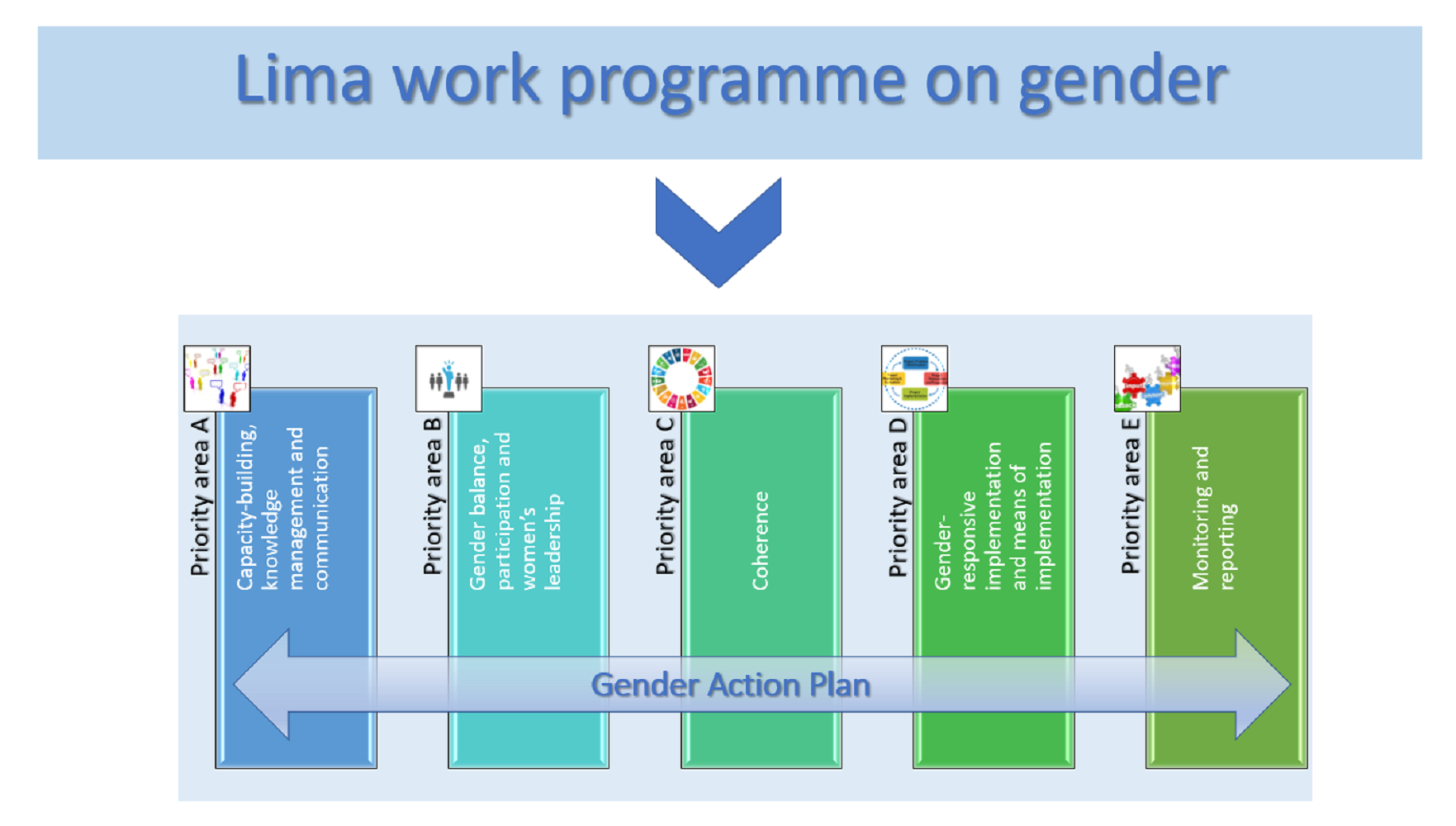
What are the Key Highlights of the Report?
- Key Highlights:
- Increase in Gender References: Approximately 81% of Parties to the Paris Agreement have now included references to gender in their NDCs.
- This marks a significant improvement from 2015, when very few NDCs mentioned gender.
- Strengthening Institutional Mechanisms: About 62.3% of Parties highlighted efforts to enhance institutional mechanisms for integrating gender considerations into climate action.
- Gender Balance Initiatives: Approximately 11.5% of Parties detailed initiatives aimed at increasing gender balance and diversity among stakeholder groups involved in monitoring and evaluating adaptation efforts, particularly in agriculture, forestry, and water resources.
- Increase in Gender References: Approximately 81% of Parties to the Paris Agreement have now included references to gender in their NDCs.
- Need For Gender Responsiveness:
- Commitment to Gender Equality: Around 55.7% of Parties affirmed their commitment to gender equality in climate action, indicating a growing recognition of its importance.
- Impact on Food Security: The report identifies how climate change threatens food security across availability, accessibility, utilisation, and stability.
- Women, responsible for 45-80% of food production in developing countries, are disproportionately affected, particularly as traditional food sources become unreliable and food prices rise.
- Vulnerability Considerations: While the report emphasises women’s heightened vulnerability to climate change, it also notes that men in vulnerable situations are often overlooked in policy planning.
- Recommendations & Future Aspect:
- Enhancing Climate Initiatives: Stakeholders view gender-responsive strategies as essential for improving the ambition and effectiveness of climate initiatives.
- Most Parties reiterated their commitment to promoting gender equality as a fundamental aspect of climate action.
- Global Stocktake Outcomes: The outcomes of the first Global Stocktake, agreed upon at the 28th Conference of Parties to UNFCCC, encourage Parties to implement gender-responsive climate policies and actions.
- Next Round of NDCs (NDCs 3.0): The upcoming submission of NDCs in 2025 presents a critical opportunity to strengthen collaborative efforts towards achieving gender equality and effective climate outcomes.
- Enhancing Climate Initiatives: Stakeholders view gender-responsive strategies as essential for improving the ambition and effectiveness of climate initiatives.
India’s Nationally Determined Contributions (NDCs)
- India has committed to reducing emissions intensity of its GDP by 45% by 2030.
- The updated NDC marks an important step towards achieving India’s long-term goal of reaching net-zero emissions by 2070.
- A new framework for transition to cleaner energy for the period 2021-2030 aims to increase green jobs, boost manufacturing of low emissions products such as Electric Vehicles and super-efficient appliances, and promote innovative technologies such as green hydrogen.
- The country committed to stronger adaptation targets.
- It will enhance investments in development programmes focused on sectors and areas vulnerable to climate change.
- India will build capacities for quick diffusion of cutting-edge climate technology.
Why Does Gender Equality Matter in Climate Action?
- Impact on Agriculture: Women play a vital role in agricultural production but lack equal access to resources, services, and decision-making processes.
- If women smallholders had the same access to resources as men, farm yields could increase by 20-30%, potentially alleviating hunger for 100-150 million people and reducing carbon dioxide emissions by 2.1 gigatons by 2050.
- Land Ownership and Resource Control: Women make up a third of the global agricultural workforce but only 12.6% of landowners.
- This disparity restricts their access to agricultural aid and increases their vulnerability due to limited information on adaptation techniques and cropping patterns.
- Decision-Making and Climate Leadership: Involving women in climate-related decision-making is essential for creating effective climate policies.
- However, women often undertake 75% of unpaid care work globally, which limits their participation. Climate-induced disasters further burden women, especially as they assist in household and community recovery.
- Impact on Education and Employment: Climate stressors can restrict access to education and labor markets for women and girls, perpetuating disempowerment.
- In disaster situations, the risk of gender-based violence increases, highlighting the need for access to quality services and meaningful participation in decision-making.
Examples of Gender-Responsive Climate Action
- Bhutan: The country has trained Gender Focal Points in various ministries and women's organisations to coordinate and implement gender equality and climate change initiatives.
- Zimbabwe: A renewable energy fund has been established to create entrepreneurship opportunities for women.
- Uzbekistan: A pilot green mortgage scheme provided low-carbon energy technology access to rural households, with 67% of the mortgages being taken out by women-headed households.
- Uruguay: The country has set up a gender-responsive monitoring, reporting, and verification system to track the impact of NDCs on gender equality.
How can Gender-Responsive Climate Policies be Improved?
- Conducting Gender Analysis: Assessing how climate change affects men and women differently helps identify inequalities and gaps in resource distribution and opportunities.
- Gender analysis enables tailored, evidence-based climate policies that address the specific needs and vulnerabilities of all genders.
- Gender-Responsive Budgeting: Ensuring equitable distribution of climate action funding is vital for mobilizing all available skills, resources, and leadership capacities to combat climate change.
- This budgeting approach considers the differing impacts of climate change on men and women, fostering inclusive and impactful climate solutions.
- Integrating Gender Equality Objectives: Climate policies aligned with gender equality goals are more likely to achieve necessary structural changes to tackle the climate crisis and promote social justice.
- Addressing the root causes of gender-based vulnerabilities leads to more resilient communities and sustainable climate outcomes.
- Promoting Gender Balance in Stakeholder Engagement: Encouraging gender diversity in monitoring and evaluating climate actions can improve the overall effectiveness of climate initiatives.
- Involving women and other underrepresented groups in decision-making ensures a broader range of perspectives and experiences are considered.
- Supporting Developing and Least Developed Countries (LDCs): Developing countries and LDCs have shown leadership in integrating gender considerations into climate policies.
- Developed nations should adopt this approach to foster a global framework for gender-responsive climate action. Collaborative efforts are vital to integrate gender equality into international climate policies and strategies.
UPSC Civil Services Examination, Previous Year Question (PYQ)
Prelims:
Q. Which of the following best describes/describe the aim of ‘Green India Mission’ of the Government of India? (2016)
- Incorporating environmental benefits and costs into the Union and State Budgets thereby implementing the ‘green accounting’.
- Launching the second green revolution to enhance agricultural output so as to ensure food security to one and all in the future.
- Restoring and enhancing forest cover and responding to climate change by a combination of adaptation and mitigation measures.
Select the correct answer using the code given below.
(a) 1 only
(b) 2 and 3 only
(c) 3 only
(d) 1, 2 and 3
Ans: (c)
Q.3 With reference to ‘Global Climate Change Alliance’, which of the following statements is/are correct? (2017)
- It is an initiative of the European Union.
- It provides technical and financial support to targeted developing countries to integrate climate change into their development policies and budgets.
- It is coordinated by World Resources Institute (WRI) and World Business Council for Sustainable Development (WBCSD).
Select the correct answer using the code given below:
(a) 1 and 2 only
(b) 3 only
(c) 2 and 3 only
(d) 1, 2 and 3
Ans: (a)
Mains:
“Access to affordable, reliable, sustainable and modern energy is the sine qua non to achieve Sustainable Development Goals (SDGs)”.Comment on the progress made in India in this regard. (2018)
Emissions Gap Report 2024
Why in News?
Recently, the United Nations Environment Programme (UNEP) released the Emissions Gap Report 2024 ahead of the COP 29 of the UNFCCC meeting in Baku, Azerbaijan.
What are Key Highlights of the Report?
- Current Trajectory: The report highlighted that if countries maintain current environmental policies, global temperatures will likely rise by 3.1°C above pre-industrial levels.
- Paris Agreement at Risk: Full implementation of all Nationally Determined Contributions (NDCs) would still lead to 2.6°C of warming.
- The Paris Agreement target is to keep the global temperature rise well below 2°C above pre-industrial levels, with an effort to limit it to 1.5°C.
- To limit global warming to 1.5°C, greenhouse gas emissions must peak before 2025 at the latest and decline 43% by 2030.
- Record High Emissions: Global greenhouse gas emissions hit 57.1 gigatons of CO₂ equivalent gases (tCO₂e) in 2023.
- India’s emissions grew by 6.1% while overall global emissions rose by 1.3% in 2023 compared to 2022.
- Major Emitters:
- G20’s Contribution: G20 countries (excluding the African Union) contributed 77% of global emissions in 2023.
- High Emissions from Key Players: Six of the largest emitters accounted for 63% of emissions globally.
- Per Capita Emissions:
- India’s per capita GHG emissions in 2022 were 2.9 tCO₂e, significantly lower than China (11 tCO₂e) and the US (18 tCO₂e).
- Developed countries have per capita emissions about three times the global average (6.6 tCO₂e), while India, African Union, and least developed countries remain below it.
- Necessary Emissions Cuts: A reduction of at least 7.5% each year until 2035 is essential to keep the 1.5°C target within reach.
- Cost of Bridging the Gap: Achieving net-zero by 2050 requires USD 900 billion to USD 2.1 trillion annually, or about 1% of global GDP.
- Emission Reduction Pathways:
- Scaling solar and wind energy can deliver 27% of required emissions reductions by 2030.
- Forest conservation and restoration could account for around 20% of reductions.
About United Nations Environment Programme (UNEP)
- Established: Founded in 1972, following the United Nations Conference on the Human Environment in Stockholm.
- Headquarters: Nairobi, Kenya.
- Governing Body: The United Nations Environment Assembly (UNEA) is the governing body of UNEP.
- UNEA is the world’s highest-level decision-making body for matters related to the environment, with a universal membership of all 193 Member States.
- Programs and Initiatives: Runs major initiatives, including the Climate Action, Ecosystem Restoration, Clean Seas, and Sustainable Development Goals (SDGs) support.
- Reports: Publishes influential reports like the Emissions Gap Report, Global Environment Outlook, and Adaptation Gap Report to guide global policies.
UPSC Civil Services Examination Previous Year Question
Prelims
Q. The ‘Common Carbon Metric’, supported by UNEP, has been developed for
(a) assessing the carbon footprint of building operations around the world
(b) enabling commercial fanning entities around the world to enter carbon emission trading
(c) enabling governments to assess the overall carbon footprint caused by their countries
(d) assessing the overall carbon foot-print caused by the use of fossil fuels by the world in a unit time
Ans: (a)
Q.“Momentum for Change: Climate Neutral Now” is an initiative launched by (2018)
(a) The Intergovernmental Panel on Climate Change
(b) The UNEP Secretariat
(c) The UNFCCC Secretariat
(d) The World Meteorological Organisation
Ans: (c)
Q. With reference to an initiative called ‘The Economics of Ecosystems and Biodiversity (TEEB)’, which of the following statements is/are correct? (2016)
- It is an initiative hosted by UNEP, IMF and World Economic Forum.
- It is a global initiative that focuses on drawing attention to the economic benefits of biodiversity.
- It presents an approach that can help decision makers recognize, demonstrate and capture the value of ecosystems and biodiversity.
Select the correct answer using the code given below:
(a) 1 and 2 only
(b) 3 only
(c) 2 and 3 only
(d) 1, 2 and 3
Ans: (c)
China's JUNO Experiment to Study Neutrinos
Why in News?
After years of construction, China's Jiangmen Underground Neutrino Observatory (JUNO) is set to begin data collection on neutrinos. This cutting-edge particle physics experiment aims to greatly enhance our understanding of the subatomic particles.
What are the Features of JUNO?
- JUNO will observe solar neutrinos for a real-time view of solar processes and study neutrinos from uranium and thorium decay within Earth to gain insights into mantle convection and tectonic plate movement.
- Set to become operational in late 2025, JUNO will start ahead of the US Deep Underground Neutrino Experiment (DUNE), scheduled around 2030.
- International Collaboration: JUNO's research team includes scientists from the US, France, Germany, Italy, Russia, and Taiwan, demonstrating extensive international cooperation.
- Future Applications of Neutrino Research: While direct applications for neutrinos remain distant, researchers speculate about potential communication uses, such as transmitting long-distance messages through solid matter at near-light speed.
What are Neutrinos?
- Neutrinos are subatomic particles that have no electric charge, have a small mass, and are left-handed (the direction of its spin is opposite to the direction of its motion).
- They are the most abundant massive particles in the universe. They are produced whenever atomic nuclei combine (as in the sun) or split apart (as in a fission reactor or particle accelerator).
- The only ways neutrinos interact is through gravity and the weak nuclear force.
- They can change from one type (electron-neutrino, muon-neutrino, tau-neutrino) to another as they travel and interact with other particles, a phenomenon sometimes called neutrino oscillation.
- Neutrinos can carry information across large distances due to their low interaction rate with matter.
- They could potentially be used to transmit information, replacing electromagnetic waves in communication channels.
Deep Underground Neutrino Experiment (DUNE)
- It will be based in South Dakota, US, situated approximately 1,500 meters underground.
- Objectives: To investigate neutrino oscillations to understand the fundamental properties of neutrinos, including their mass hierarchy.
- Study the asymmetry between matter and antimatter, neutrino interactions, and potential proton decay.
- Global Collaboration: Involves scientists from over 30 countries, including the US, UK, India, Japan, and Brazil, making it one of the largest international collaborations in particle physics.
- Scientific Significance: Expected to reveal insights into particle physics that could impact theories of the universe’s evolution.
Indian Neutrino Observatory (INO)
- It is a proposed particle physics research mega project with the objective to study neutrinos in a 1,200-metre deep cave.
- The project is proposed to be set up at Pottipuram village in Theni district in Tamil Nadu.
- The project was initially mooted by the Institute of Mathematical Sciences and then by the Tata Institute of Fundamental Research.
- As of October 2024, the construction of the INO project is stalled due to opposition from the state government and ecologists.
UPSC Civil Services Examination, Previous Year Question (PYQ)
Q. In the context of modern scientific research, consider the following statements about ‘IceCube’, a particle detector located at South Pole, which was recently in the news: (2015)
- It is the world’s largest neutrino detector, encompassing a cubic kilometre of ice.
- It is a powerful telescope to search for dark matter.
- It is buried deep in the ice.
Which of the statements given above is/are correct?
(a) 1 only
(b) 2 and 3 only
(c) 1 and 3 only
(d) 1, 2 and 3
Ans: (d)
ITBP Raising Day 2024
Recently, the Prime Minister greeted the Indo-Tibetan Border Police (ITBP) Himveers and their families on the occasion of ITBP Raising day. ITBP is a Central Armed Police Force functioning under the Ministry of Home Affairs.
- It was raised on 24th October, 1962 during the India-China War and is a border guarding police force specialising in high altitude operations.
- In 2004, based on the center's “One Border One Force” recommendation, the entire 3,488 km India-China border from Karakoram Pass in Ladakh to Jachep La in Arunachal Pradesh was assigned to the ITBP.
- The ITBP then took over border guarding duties from the Assam Rifles in Sikkim and Arunachal Pradesh.
- Motto: “Shaurya-Dridhata-Karma Nishtha”.
- Currently, it is posted in Jammu & Kashmir, Himachal Pradesh, Uttarakhand, Sikkim, and Arunachal Pradesh.
- ITBP also conducts relief and rescue operations as 'First Responders' for natural calamities in the Himalayan region.
Read More: India's Border and It's Management
State Contingent Debt Instruments (SCDIs)
The Global Sovereign Debt Roundtable (GSDR), which addresses challenges in debt restructuring processes, is set to discuss State Contingent Debt Instruments (SCDIs).
- SCDIs:
- It helps speed up debt restructuring by offering bonds with payouts contingent on countries meeting specific economic or fiscal targets.
- E.g., GDP-linked bonds issued by Ukraine that are tied to economic growth.
- They do not have a fixed interest rate.
- Payout structure varies depending on economic growth, natural resource revenue, or tax receipts.
- SCDIs act as “deal accelerators,” especially in cases where there are fundamental disagreements about a country's economic outlook.
- It helps speed up debt restructuring by offering bonds with payouts contingent on countries meeting specific economic or fiscal targets.
- GSDR:
- GSDR, which is co-chaired by the IMF, World Bank, and the G20 Presidency (currently Brazil), started functioning in 2023.
- It comprises official bilateral creditors (both traditional creditors members of the Paris Club and new creditors), private creditors and borrowing countries.
- The Paris Club (1956) is an informal group of creditor countries that work together to support nations facing financial difficulties, chiefly those struggling to pay off debts.
Read More: UN Report on Global Debt Crisis
Indian Bonds Join FTSE Index
Recently, FTSE (Financial Times Stock Exchange) Russell announced that it will add India's sovereign bonds to its Emerging Markets Government Bond Index (EMGBI) in September 2025.
- About:
- FTSE Russell (a leading global index provider), has become the third organization to include Indian bonds in its emerging market bond index, following JPMorgan and Bloomberg.
- The EMGBI tracks local currency government bond performance from 16 countries, serving as a broad benchmark for portfolio managers.
- FTSE Russell (a leading global index provider), has become the third organization to include Indian bonds in its emerging market bond index, following JPMorgan and Bloomberg.
- India’s Representation:
- Indian government bonds, after being on FTSE's watch list for three years, will now represent 9.35% of the EMGBI.
- Impact on India’s Bond Market:
- This inclusion could inject billions into India’s bond market, increasing demand for Indian bonds and enhancing investor sentiment.
- Indian bonds have attracted approximately USD 18.5 billion in foreign inflows, indicating growing global interest.
- Government Bonds:
- It is a tradable debt instrument issued by the Central or State Governments.
- It is used by the government to borrow money from the public to finance its fiscal deficit.
Read More: India's Inclusion in JPMorgan GBI-EM Index
Brain Mapping of Fruit Fly
Recently, Scientists mapped the entire brain of an adult fruit fly, a breakthrough that advances our understanding of brain function in animals and humans.
- Objective:
- Aimed to understand how brains are wired and the signals that support healthy brain functions.
- Research Scope:
- The study mapped over 50 million neural connections among more than 139,000 neurons in the fruit fly a common model in neurobiological research.
- Connectome Development:
- The research created a connectome for the adult fruit fly's brain, expanding on studies of simpler organisms like the worm Caenorhabditis elegans and fruit fly larvae.
- Applications to Neuroscience:
- Fruit flies, capable of behaviors like learning, memory, and social interaction, serve as valuable models for studying brain functions relevant to humans.
- About Fruit Fly:
- Fruit flies, part of the Drosophilidae family, are commonly known as vinegar, wine, or pomace flies and are usually found on ripe or rotten fruits.
- It has been a widely used model organism in biological research for the last 100 years, contributing to many discoveries.
- Its genome is fully sequenced, offering extensive information on its biochemistry, physiology, and behavior.
Read More: Connectome, Brainoware


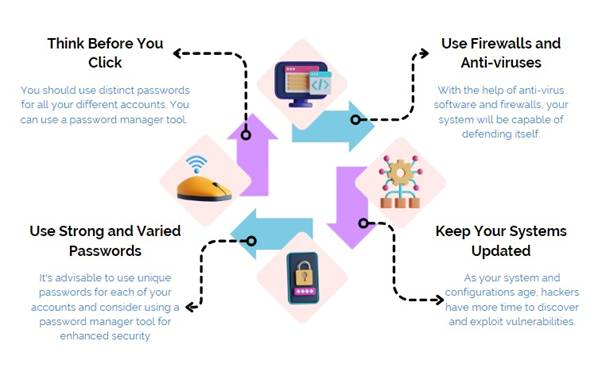
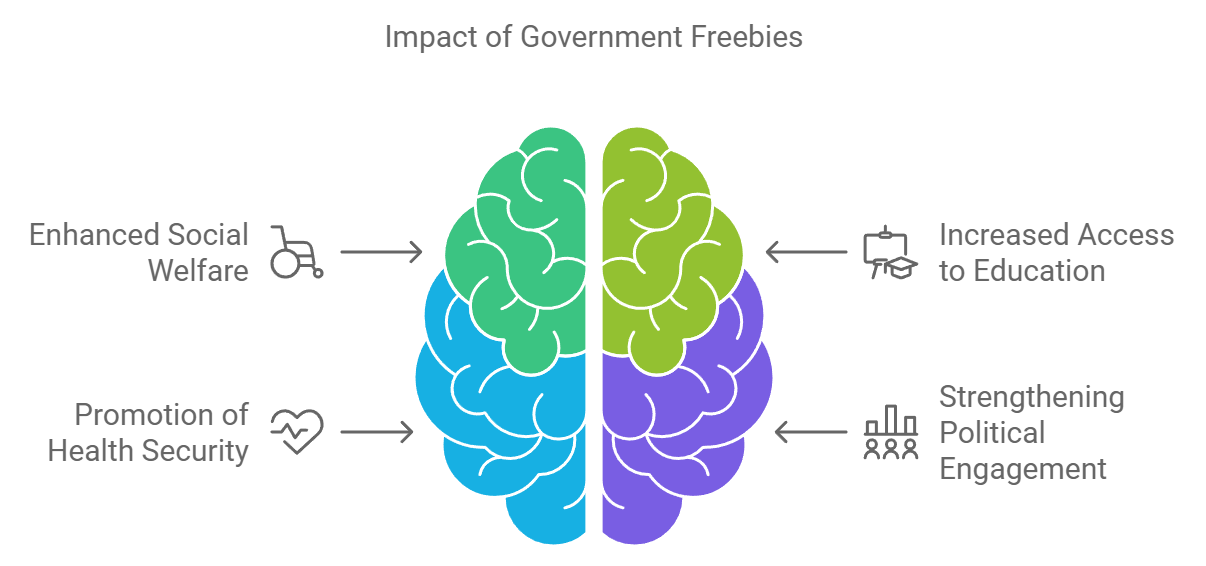
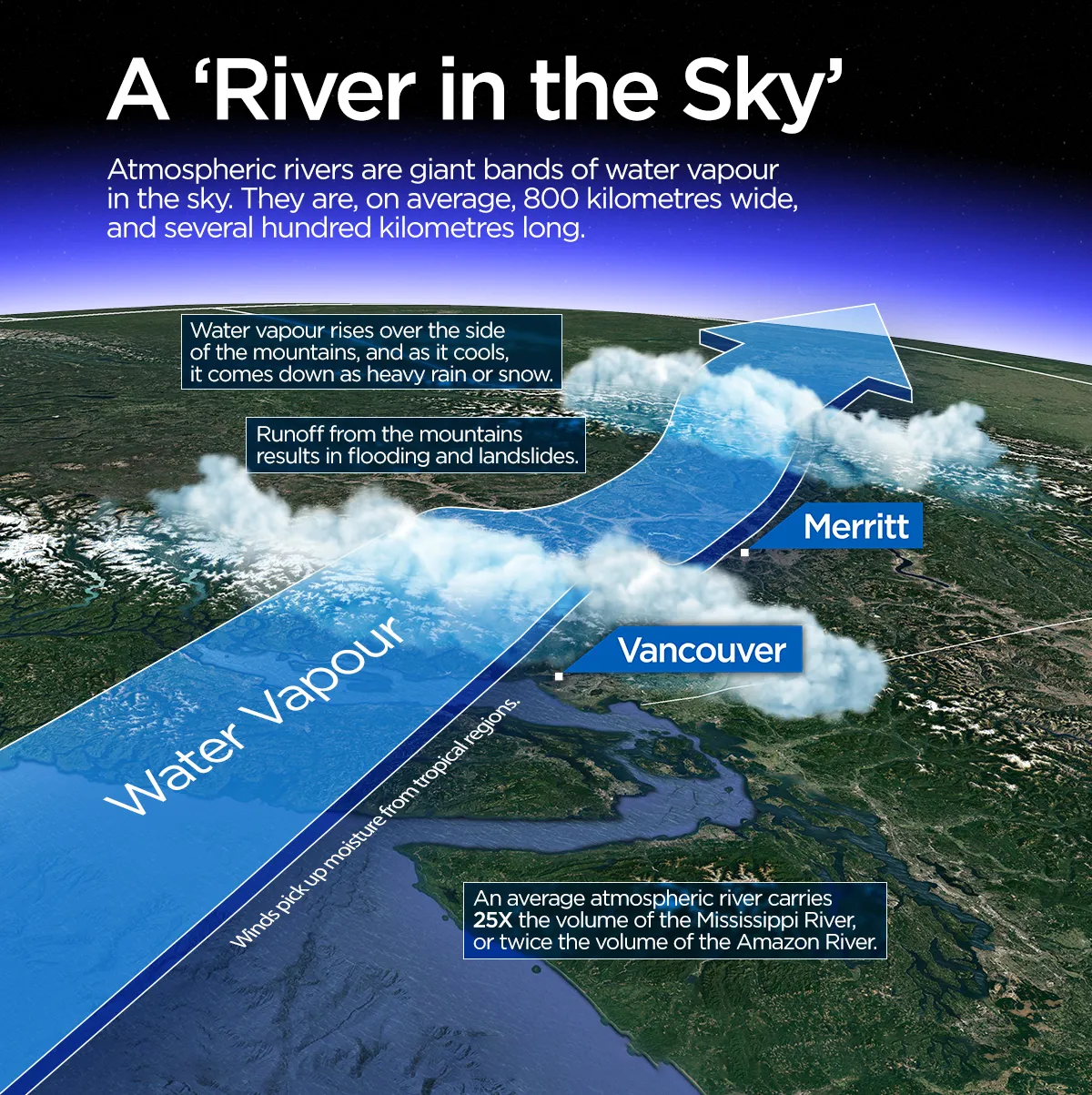

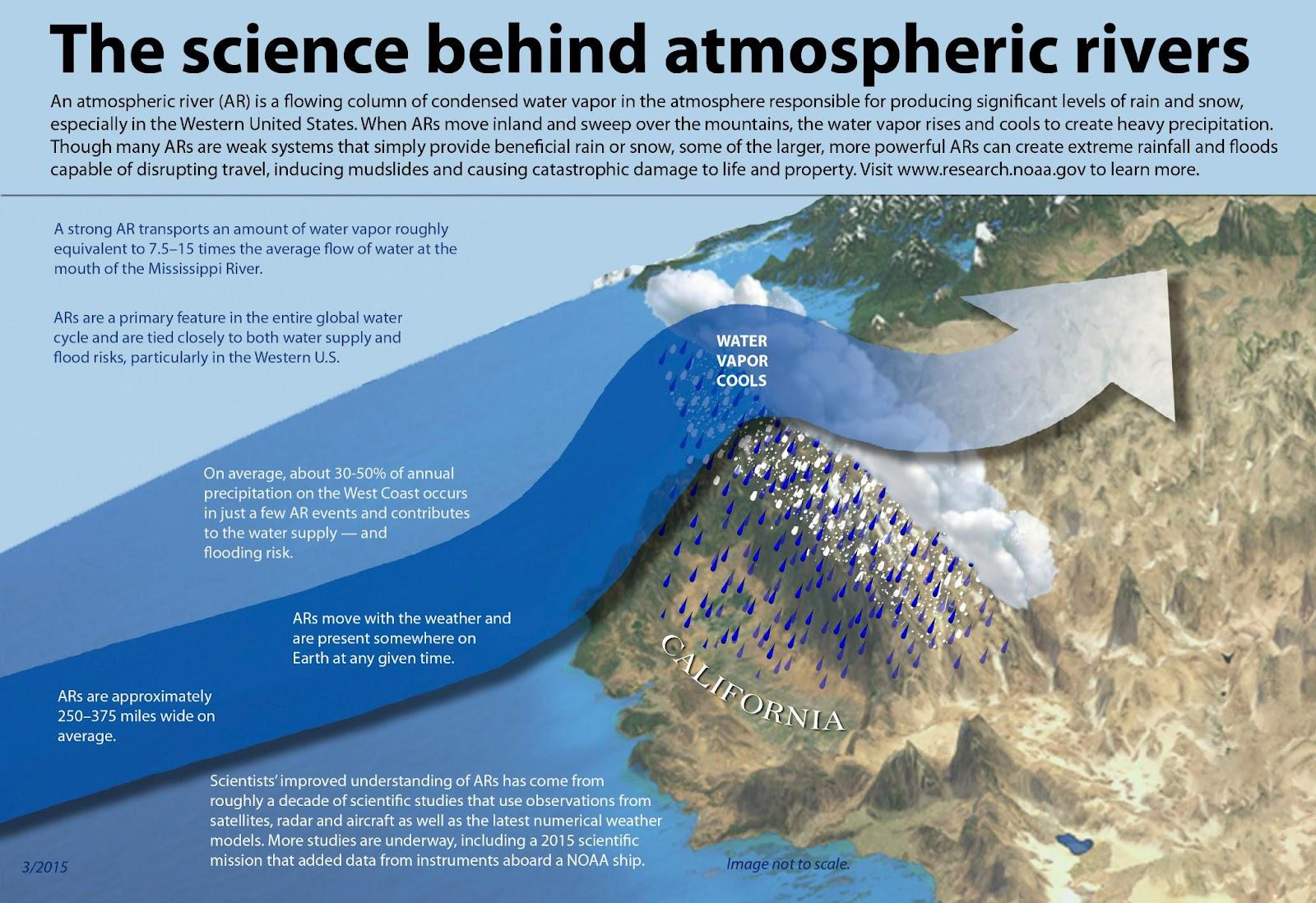

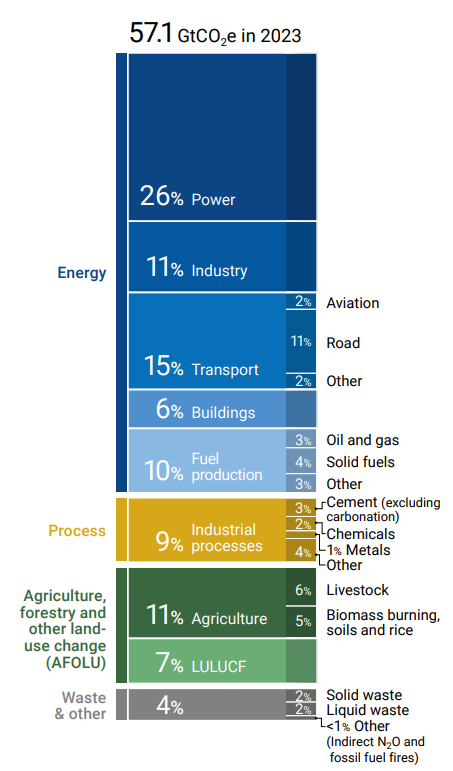
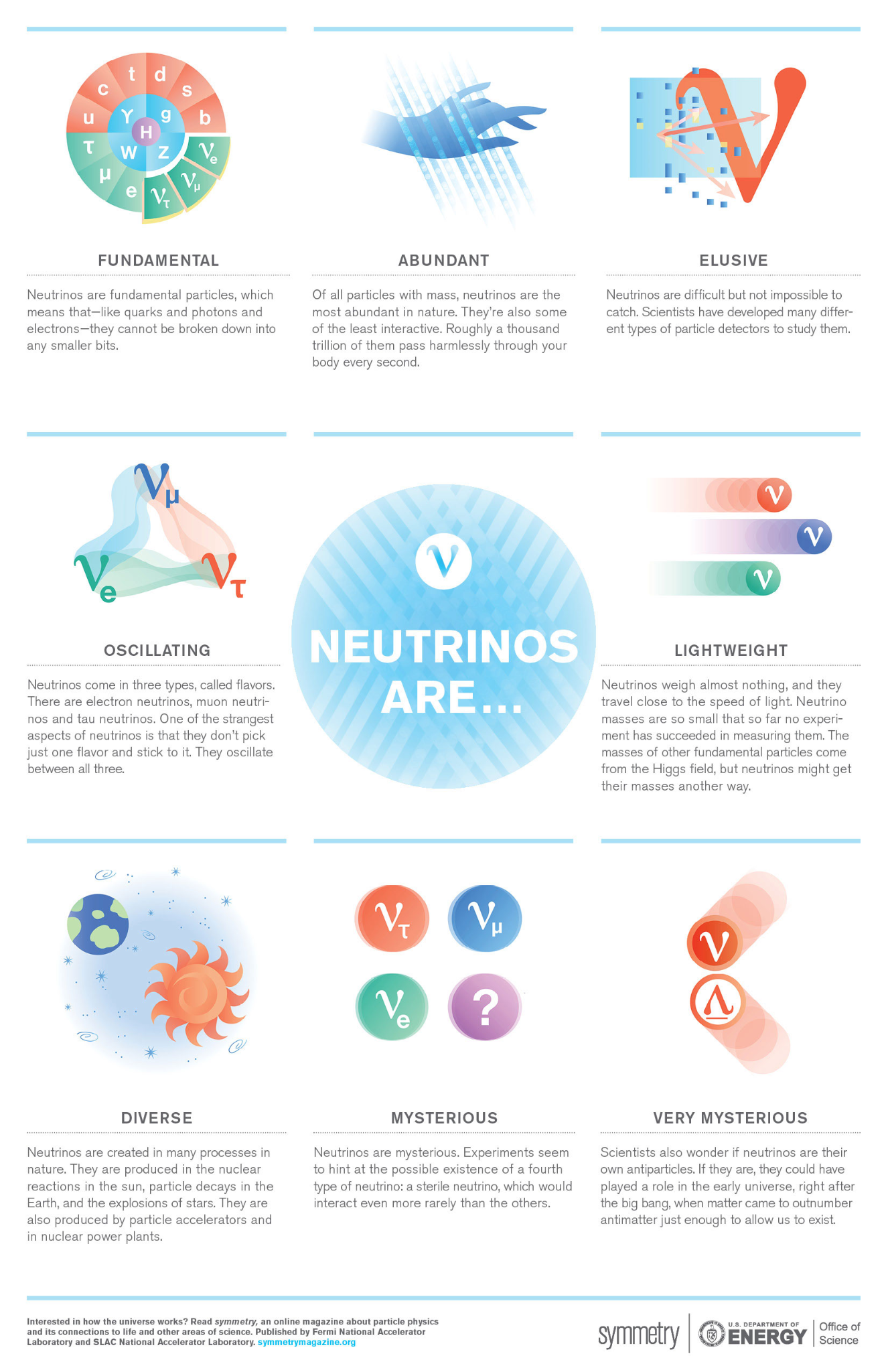
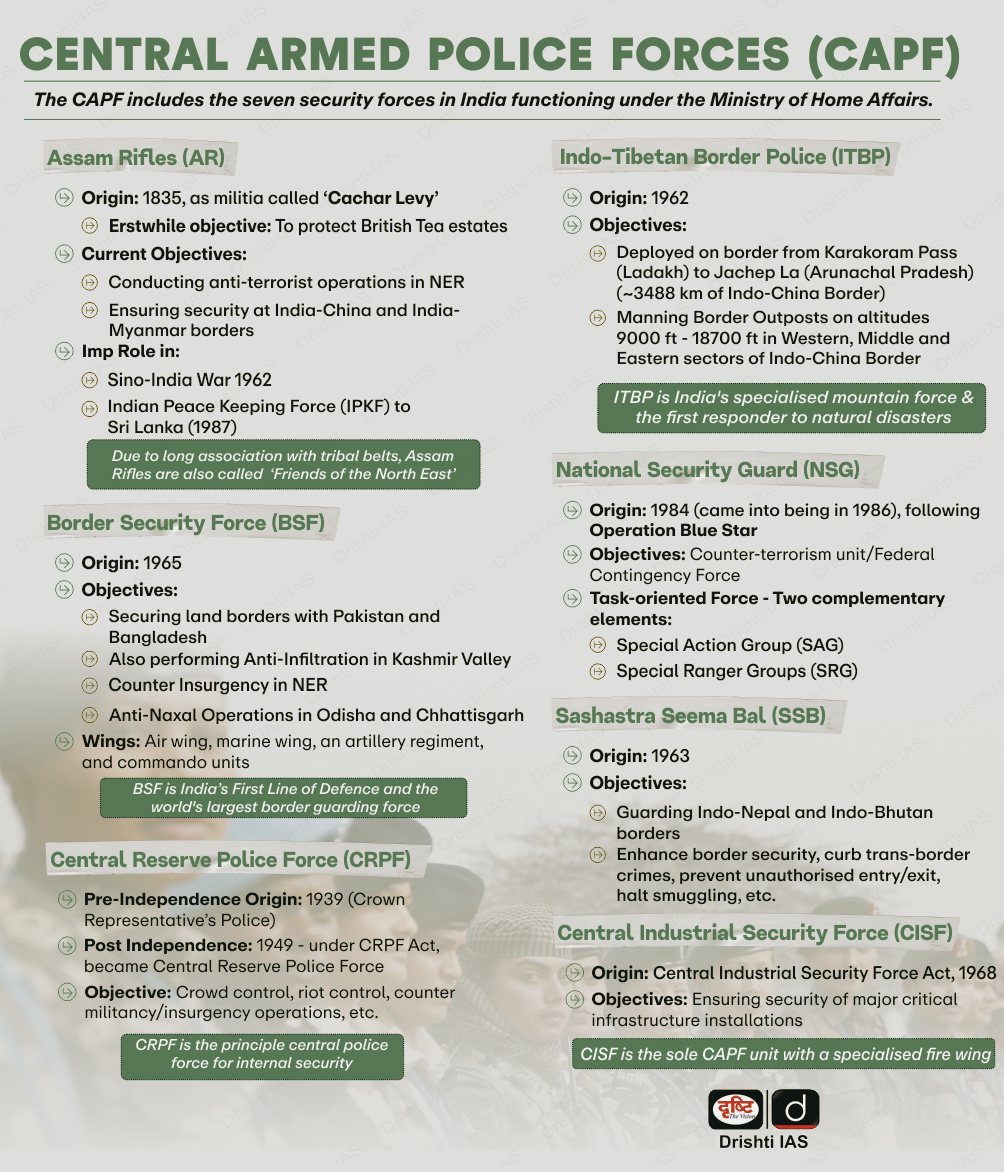
.png)